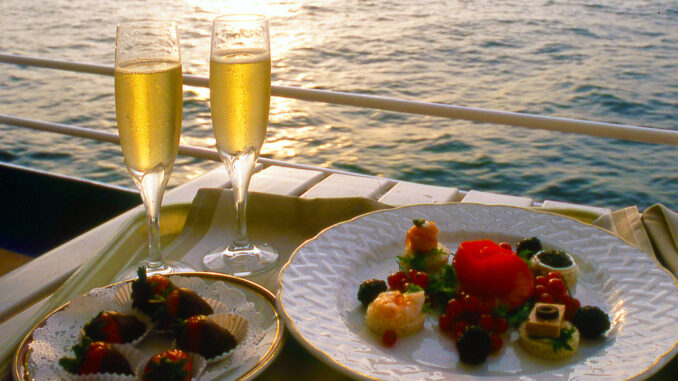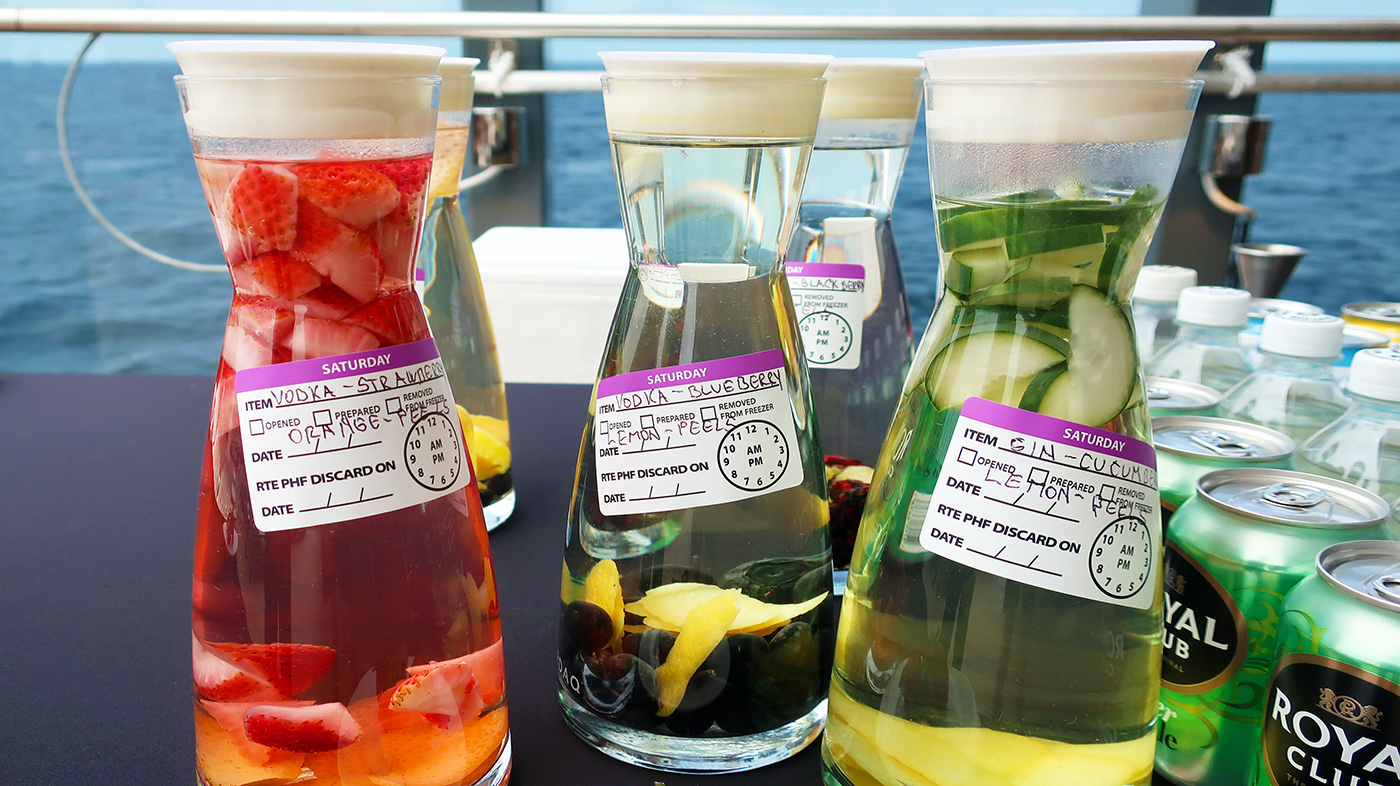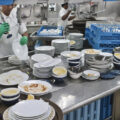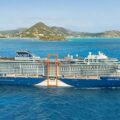
Imagine managing floating cities full of different restaurants and having to plan shopping lists for what diners are going to be ordering a year from now.
That’s the challenge facing cruise lines as they look ahead at the ever-changing trends in food and beverage on their ships.
Better plan for more regional specialties, more sustainable seafood and more low- or zero-alcohol beverages because they’re surging in popularity, specialists in cruise logistics predicted in advance of the Seatrade Cruise Global cruise conference in Florida. At the same time, they cautioned that food price inflation isn’t going away and supply chain disruption are set to continue. That means longer lag times between orders and delivery, which is a big issue if a cruise can’t load new supplies before it heads out for days at sea.
The trends are based on surveys by cruise lines, food and beverage stakeholders, and culinary leaders with support from the Cruise Lines International Association, the Florida-Caribbean Cruise Association and industry consultants MarkeTeam.
“Our detailed report findings present a unique opportunity for food and beverage suppliers to gain a glimpse into the abundant possibilities for growth within the cruise industry,’” explained Chiara Giorgi, global brand and event director for industry association Seatrade Cruise. The insights will be presented to industry decision makers at the inaugural F&B@Sea event at the Seatrade Cruise Global conference in Fort Lauderdale March 27-30.
As for demand, 61 per cent of those polled said a key demand will be local gastronomy reflecting of cruise itineraries. More guests than ever are demanding sustainable seafood, meat alternatives and zero-waste cooking. “Instagramable” dining experiences also scored high as a trend.

Health conscious drinking is set to be another major trend, Low to no-alcohol beverages are rising in demand due to health warnings, as are infusions and smoothies touted as healthy alternatives to sodas.
Technology is on the rise, with many cruise lines moving to contactless menu apps that present on-line menus based on QR codes rather than on paper and allow remote ordering.
Research conducted by the organization indicated that the global food and beverage market is expected to be worth $8.9-trillion by 2026, with six leading cruise lines accounting for more than $2-billion in food and beverage annually. The research data was collected by surveying suppliers and cruise professionals responsible for food, beverage and hotel operations.
And don’t worry, the research will make sure that cruise lines won’t run out of what you want to order on your next cruise. Party on!
The complete Cruise F&B Trends E-Report is accessible online here.
Wallace Immen, The Cruisington Times






1 Trackback / Pingback
Comments are closed.